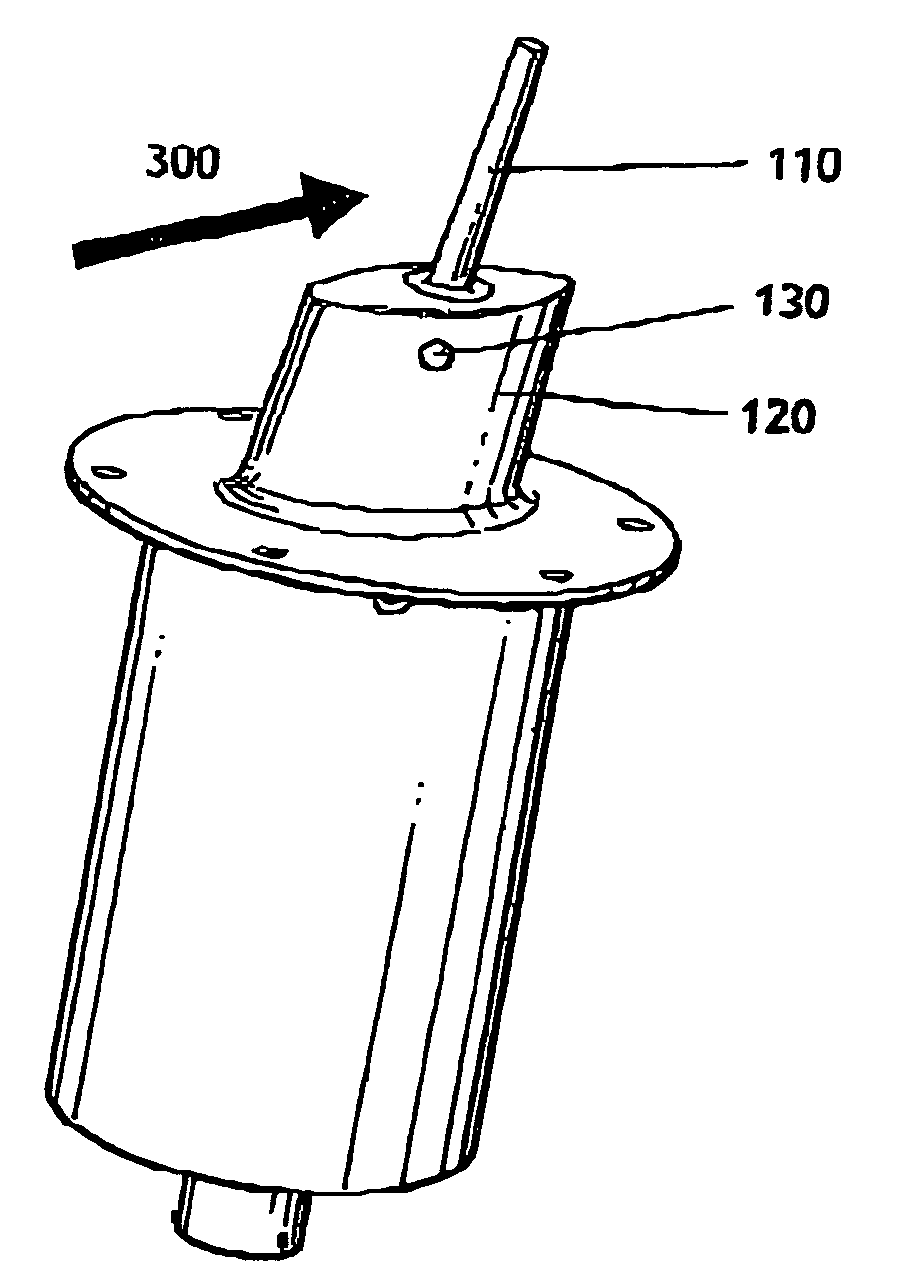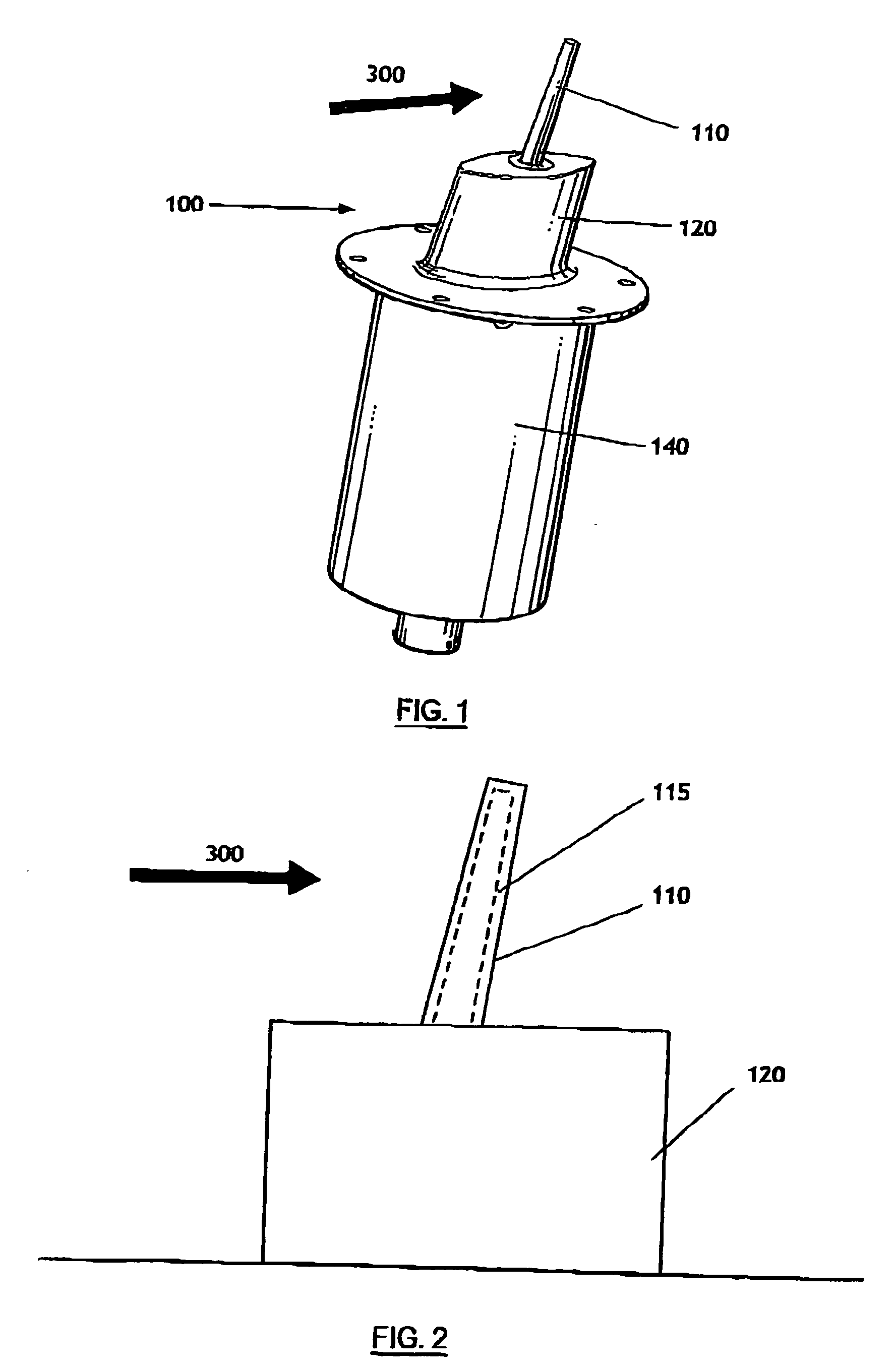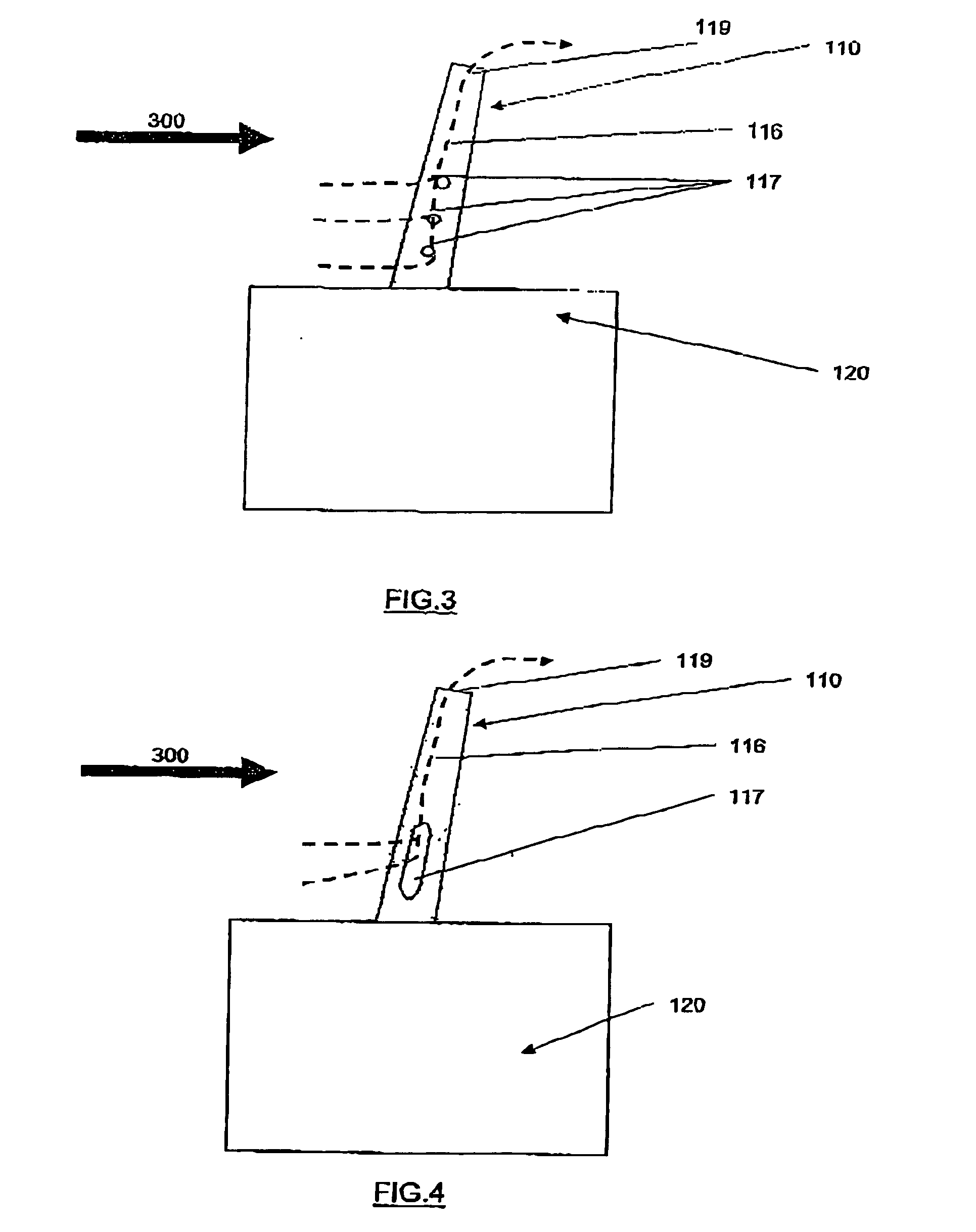Ice detection assembly installed on an aircraft
- Summary
- Abstract
- Description
- Claims
- Application Information
AI Technical Summary
Benefits of technology
Problems solved by technology
Method used
Image
Examples
Embodiment Construction
[0059] As shown in FIG. 1, an ice detection assembly 100 according to the invention comprises: [0060] a mast 120; [0061] an elongated finger 110 extending into the surrounding air from the mast 120 to which it is bonded, usually transverse to the air flow; [0062] a system for cooling at least a part of the detection assembly (not shown in FIG. 1).
[0063] The mast 120 may be in the shape of a symmetric wing profile or of an ellipse.
[0064] An attachment flange 140 is usually provided to hold the detection assembly 100 in place and fixed onto an attachment surface outside the aircraft.
[0065] A box (not shown) is fixed to the flange 140, extending inwards into the aircraft through the attachment surface, for containing and for protecting electrical connections and circuits necessary for operation of the detection assembly 100. In particular, this box comprises the different electrical equipment, electronic cards and components used to supply and control the frequency excitation of the...
PUM
 Login to View More
Login to View More Abstract
Description
Claims
Application Information
 Login to View More
Login to View More - R&D
- Intellectual Property
- Life Sciences
- Materials
- Tech Scout
- Unparalleled Data Quality
- Higher Quality Content
- 60% Fewer Hallucinations
Browse by: Latest US Patents, China's latest patents, Technical Efficacy Thesaurus, Application Domain, Technology Topic, Popular Technical Reports.
© 2025 PatSnap. All rights reserved.Legal|Privacy policy|Modern Slavery Act Transparency Statement|Sitemap|About US| Contact US: help@patsnap.com



